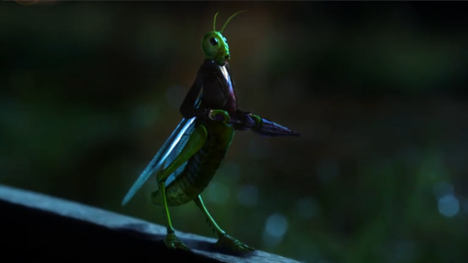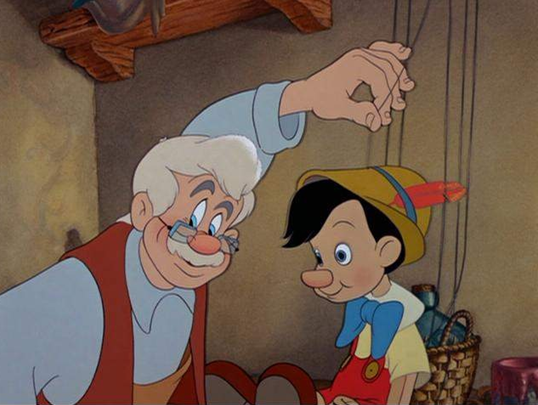Genre: Drama/Adventure
Premise: The heretofore unknown tale of Pinocchio’s famous father, Geppetto.
About: Michael Vukadinovich’s script hit the spec market in 2011 and was snatched up immediately by 20th Century Fox for mid six figures. Vukadinovich began his career as a playwright (his most celebrated work being, “Trog and Clay (An Imagined History of the Electric Chair)” before moving into screenwriting. He has another project with Peter Dinklage attached called, “Rememory” about a professor who can record memories. The Three Misfortunes of Geppetto was a 2011 Black List script. Shawn Levy, the director of the Night at the Museum movies and, more recently, “This is Where I Leave You,” is attached to direct.
Writer: Michael Vukadinovich
Details: 118 pages
I decided to review this script today for one reason. To highlight the most spec-sale friendly of all the types of scripts out there.
There is no other type of script that has done better in the market over the last ten years. The formula? You find a fairy tale, then find a new angle to tell the story from. Whether it be the recent Malificent, about one of the most famous fairy tale villains in history, the edgy take on Snow White that was Snow White and the Huntsman, the dark spec sale from a couple of years ago, “Pan,” that reimagines Peter Pan as a serial killer. I’ve read 20 other spec sales in the past five years that have also succeeded with this formula. Hollywood goes nuts over this stuff.
And it’s not hard to imagine why. When a studio looks at a project, the first thing they do is ask how it can be marketed. Will the marketing be easy or difficult? The more difficult it is, the more stellar the other components of the screenplay have to be. But usually, there’s a tipping point – and it’s not very far down the line – where if the marketing is too tricky, they don’t bite.
With these kinds of screenplays, the marketing is always done for you. You say, “Snow White” and people immediately know who that is. There’s a comfort level there, like having your favorite coffee in the morning or turning on your favorite sit-com after a long day of work. So studios are always all over these scripts. In addition to Shakespeare adaptations, they’re one of the most bankable script approaches out there.
The Three Misfortunes of Geppetto places us squarely in the year 1919 where we meet Geppetto, an optimistic enthusiastic young man with his whole life ahead of him. But Geppetto can only think of one thing – the beautiful Julia Moon. Their love for one another is so powerful, you get the sense they fell in love BEFORE first sight.
The two know they’re spending the rest of their lives together, but before that can happen, the Depression hits and Geppetto’s family loses everything. This is when we first meet Geppetto’s evil nemesis, Edmund Vile (pronounced “Vee-lay!” he tells everyone). Edmund hates Geppetto and his perfect life and will do anything to destroy it. He starts by trapping Geppetto’s parents on a train crossing, watching gleefully as the train hits and kills them.
When Geppetto is later sent off to the war, he hears that Edmund has moved in on Julia. She refuses to marry him, but when word comes back, erroneously, that Geppetto has died, she has no choice. When Geppetto finds this out, it’s a race to get back in time to stop the wedding and be with Julia once more.
(spoilers) Geppetto succeeds in the knick of time, and ends up marrying Julia. But then Edmund has a witch put a spell on the two, making it impossible for them to have children. The couple will have to come up with another solution, a solution I’m pretty sure you can figure out. But the evil Edmund will do his best to stop it, in a last ditch attempt to destroy the couple’s life forever.
 Jiminy makes a cameo in the script!
Jiminy makes a cameo in the script!
So let’s see if we can do this here. Pick a well-known fairy tale that’s in the public domain. Let’s say… Beauty and the Beast. Now look for a new angle to tell the story from. We could set the story in modern times? That could make it fresh. We could make the girl the “beast” instead of the guy. Role-reversal usually works. Or maybe we tell the story on a planet inhabited by beasts, and the girl is the only “human” and therefore a “beast” to them.
I’m only half-joking with these ideas. Obviously, I’m making this sound a little easier than it is, but I bet if you spent an entire week trying to come up with a fun fresh take on a fairy tale, you could. Of course, the second ingredient to this meal is that you have to love these kinds of stories. If you’re writing strictly for cash, the reader can tell. That’s what’s allowed “Geppetto” to stand above its competition. You can tell Vukadinovich loves his subject matter.
I’m not sure I’ve ever read something so unapologetically saccharine. “Geppetto” wears its heart on its XXL sleeves, pumping its sugar-laced blood directly into the reader’s veins for good measure. Geppetto, with his idealistic world view and his stay-positive attitude despite one tragedy after another makes it impossible to root against him.
Indeed, we talk about making characters likable all the time. One of the easiest ways to do so is to bestow tragedy upon tragedy on your character. We see that here, with his parents dying, with Geppetto and Julia not being able to have kids. Poor Geppetto even has to watch a baby whale die!
But what if you want to take your character from likable to lovable? Spiking the likable punch requires never having your hero sulk about his misfortunes. Have him stay positive and keep fighting. No character is more likable than the one who stares adversity in the eyes and keeps on fighting. Think about it. Who are the people in life you most admire? Chances are they’re people who keep fighting no matter how bad it gets.
Where Geppetto stumbles is in its structure. It sets up its story nicely. And then when Geppetto goes off to war, the story goal arrives – he must get back to Julia before she marries Edmund. (spoiler) But that goal is achieved on page 75. And there are still 45 pages to go. “Geppetto” decides not to replace this goal with a new one.
Instead, the goal is shifted over to Edmund – His goal becomes to ruin Geppetto’s and Julia’s happiness. You can probably hear me groaning. I don’t like non-specific goals. They don’t have that clean understandable objective that the audience can get behind. I can understand stopping a wedding. Destroying one’s happiness is too vague. And it shifts the goal away from the main character, which is always a dangerous thing to do, especially as you’re entering your last act, when, preferably, you want your hero to be his most active (if he has no goal to pursue, then by definition he’s not going to be active).
So that really hurt the script, and it’s something I’m sure the studio has been trying to address in the rewrites. Another problem is that “Geppetto” loves its influences a little too much, those influences being Forrest Gump, The Princess Bride, It’s a Wonderful Life, and Amelie. True love is mentioned numerous times here. We also start in the present with a grandfatherly character telling his grandson this tale. We have fun little flashbacks, a la Forrest Gump, of great grandfathers, great great grandfathers, and great great great grandfathers, dying of heart attacks. And Edmund seems almost beat for beat, a Mr. Potter clone. Sometimes reading Geppetto was like driving down memory lane for your favorite movies.
Despite that, the script has such an earnest idealistic love for its story, and Geppetto is so darn likable, that the script survives this and the structure problem. It’s an unexpectedly sweet tale that is sure to give you goosebumps at least a couple of times. And, for the most part, the proper way to approach this kind of script.
[ ] what the hell did I just read?
[ ] wasn’t for me
[x] worth the read
[ ] impressive
[ ] genius
What I learned: Remember that when you shift the goal that’s driving your story over to your villain, you are making your main character inactive or reactive. Since audiences tend to like characters who are active (who drive the story), this is a dangerous route to take. However, if you do it, I’d advise doing it in the first half of your screenplay as opposed to the second. The second half is where you want your hero the MOST active. For example, in Star Wars, the movie starts off with the villain having the goal (Darth Vader is trying to get a hold of the Death Star plans). But in the end, Luke has the goal that’s driving the story (to destroy the Death Star).


